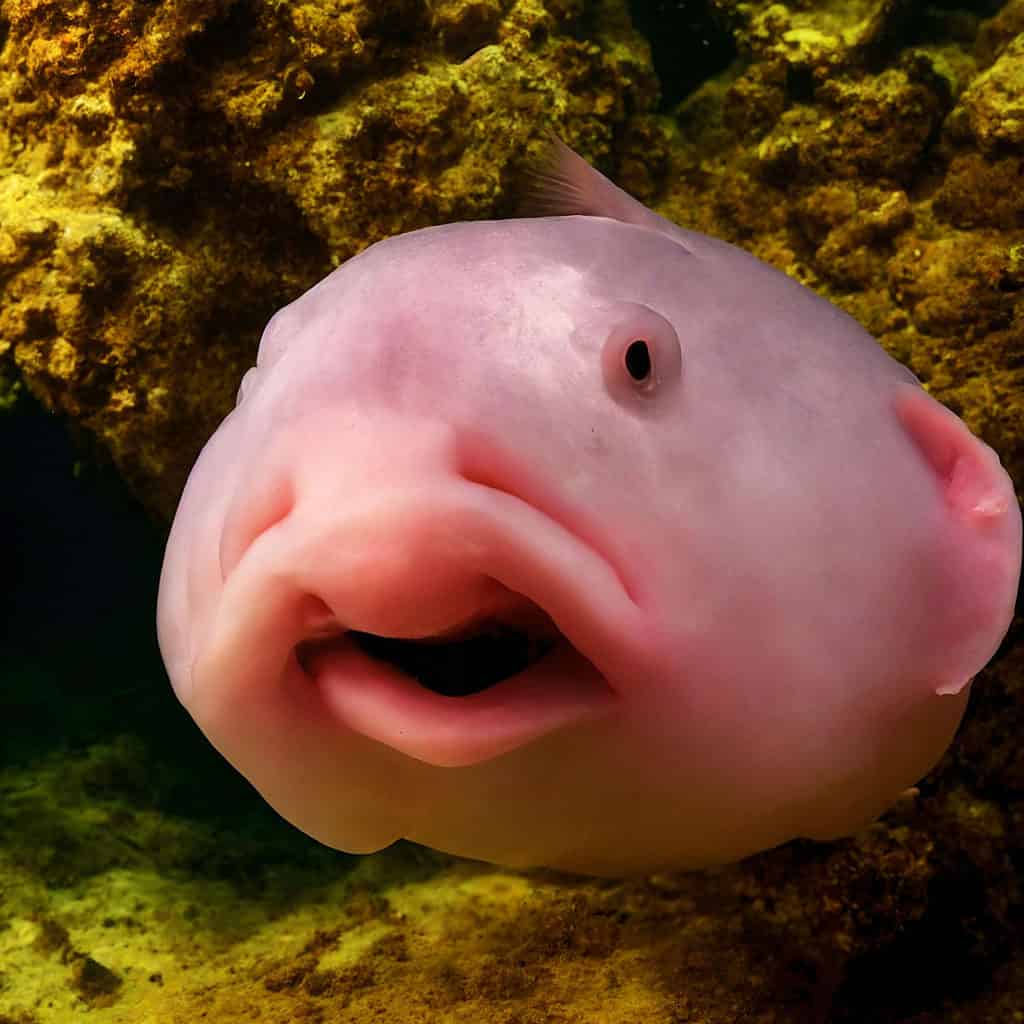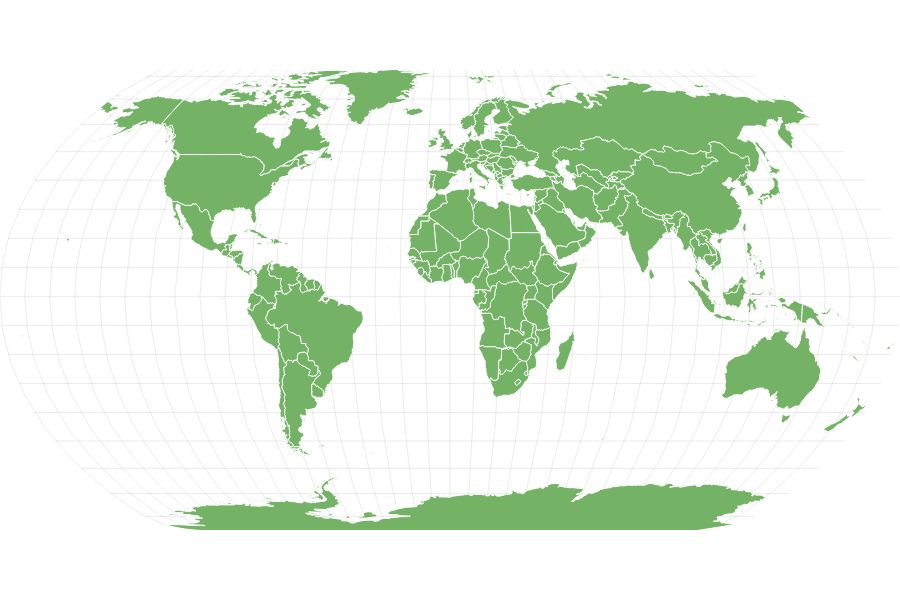Blobfish
Psychrolutes marcidus
One of the ugliest creatures in existence!
Advertisement
Blobfish Scientific Classification
- Kingdom
- Animalia
- Phylum
- Chordata
- Class
- Actinopterygii
- Order
- Scorpaeniformes
- Family
- Psychrolutidae
- Genus
- Psychrolutes
- Scientific Name
- Psychrolutes marcidus
Read our Complete Guide to Classification of Animals.
Blobfish Conservation Status
Blobfish Facts
- Prey
- Crustaceans, anything it finds
- Other Name(s)
- Sculpin
- Habitat
- Deep ocean waters
- Predators
- Humans
- Diet
- Omnivore
- Lifestyle
- Sedentary
- Common Name
- Blobfish or Smooth-Head Blobfish
- Location
- Oceans near Australia, New Zealand, Japan, and California
- Slogan
- One of the ugliest creatures in existence!
- Group
- Fish
View all of the Blobfish images!

The blobfish is one of the world’s most recently identified creatures – and it’s really ugly!
Having been accidentally caught during a research voyage off the coast of New Zealand in 2003, the blobfish (or specifically, smooth-head blobfish) is a very recent discovery.
Although scientists classified the species in 1926, the general public had never heard of the creature, only gaining popularity and attention after its capture due to its odd looks.
Little is known about this fish because of its small numbers and its remote habitat. Since 2013, the blobfish has had the distinction of officially being the world’s ugliest creature, according to an online poll conducted by the British-based Ugly Animal Preservation Society.
5 Fascinating Blobfish Facts

Learn more about Blobfishes in this detailed article!
©World-Wide-Photography/Shutterstock.com
- Blobfish don’t have swim bladders – the air-filled sacs that keep many different species of fish buoyant – because those sacs would collapse under the water pressure at the depths where blobfish live.
- They are not very active, moving primarily to open their mouths when a source of food comes near them.
- Blobfish don’t have a skeleton, only a partial backbone. Their muscles are minimal too, which helps them survive in the crushing pressure of the deep underwater habitats where they are found.
- Their gelatinous flesh, which is slightly less dense than seawater, helps them remain buoyant and prevents them from vomiting the contents of their stomachs.
- The smooth-head blobfish takes on a much different shape when it is in its natural environment than when it is removed. Out of the water or in shallow water, it takes on a much uglier appearance.
You can check out more incredible facts about blobfish.
Scientific Name

Blobfish are an endangered species.
©World-Wide-Photography/Shutterstock.com
The Psychrolutidae family has eight genera and more than 30 species. The most well-known in the family is the blobfish (Psychrolutes marcidus), also known as the smooth-head blobfish.
These fish are commonly known as fathead sculpins. Other close species are the blob sculpin (Psychrolutes phrictus) and the western Australian sculpin (Psychrolutes occiendentalis).
Here are the different types of blob fish that we know of so far:
- Psychrolutes marcidus.
- Psychrolutes phrictus.
- Psychrolutes microporos.
- Psychrolutes occidentalis.
Evolution and Origins
The blobfish, according to scientists, descended from fish that had air sacs but had to compete with numerous other fish for food. The fish may travel considerably deeper, where competition is less intense, by eliminating the air sacs and adopting a gelatin body in their place.
There are two ways the blobfish has evolved over time:
The gas bladders that kept the blobfish afloat were lost, and gelatin bodies that could withstand deeper water were substituted. The second is changing from swimming to floating.
After the fish has been ripped from its environment and has sustained severe tissue damage as a result of the abrupt depressurization that occurred when it was hauled to the surface, it merely seems sad and pink.
Appearance and Behavior

The blobfish has an odd, almost human-like face. Some call it one of the ugliest creatures on earth.
©lacking author information / public domain – License
When in shallow water or water above sea level, blobfish take on an ugly, almost frightening appearance that resembles a gelatinous older man whose face has begun to melt.
However, the blobfish doesn’t look that way in its natural habitat. It looks pretty much like a regular fish. The extreme pressure of the ocean depths, which can be up to 120 times higher than it is at the surface, holds the blobfish together.
Blobfish look the way they do when they come to the surface because their anatomy has essentially adapted to their deep-sea habitat. They have little to no skeleton as well as little muscle, which explains their gelatinous look when they come to the surface. When blobfish are hauled to the surface, they encounter a rapid pressure drop, which causes their anatomy to turn into a gooey mess.
Blobfish are generally whitish or light grey. Their size varies across the Psychrolutidae family with smooth-head blobfish growing to 12 inches, while blobfish sculpins can grow up to 28 inches. In their natural habitat, sculpins have broad, flat heads, large, widely separated eyes, and curved mouths with fleshy lips. The body tapers rapidly behind the head. The dorsal fin of this fish has eight spines and about 20 soft rays, while the anal fin has no spines and 12 to 14 soft rays. The pectoral fins are large and become fleshy in larger specimens.
Minimal skeletons and flesh filled with water are characteristic of deep-sea fish as it enables them to live in their harsh environment. This anatomical makeup also serves them well as they don’t have to expend much energy to move along the ocean floor looking for food. Blobfish lead lethargic lives, moving only when necessary. As their skin is slightly less dense than seawater, it also helps prevent them from vomiting the contents of their stomachs.
Little is known about the behavior of blobfish because it is difficult to view them in their natural habitat at the bottom of the ocean floor. But, it is believed that they prefer to be at rest and can go days without eating to conserve energy.

Habitat
Blobfish are well adapted to deep water and live near the bottom of the ocean. The smooth-head blobfish lives in depths of 2,000 to 4,000 feet near Tasmania, Australia, and New Zealand.
A second blob-head species, Psychrolutes microporous, lives in abyssal waters between Australia and Tasmania. The Western Australian blobfish lives in the eastern Indian Ocean around Rowley Shoals off the northwestern coast of Australia.
Another species, the blobfish sculpin, lives even deeper underwater at depths of up to 9,800 feet. This species primarily inhabits the northeast Pacific Ocean, particularly the Gorda Escarpment off the coast of California, but it is also found in the waters off Japan.
Diet
Like much deep-sea fish, blobfish feed on invertebrates as well as carrion that falls to the seafloor. As their mouths are fairly large, they can consume bigger creatures such as sea pens, crabs, mollusks, and sea urchins. At the same time, though, they also consume garbage like plastics, which can kill them. These fish are lazy and don’t hunt, so if their surrounding habitat changes and their food source becomes unavailable, they could die. How much food they must consume per day is unknown.
Predators and Threats
Some scientists believe that the blobfish is highly endangered as their numbers may be declining due to commercial fishing. However, others believe that we don’t know enough about them and their deepwater habitats, which can obscure the true numbers of Psychrolutes marcidus living in the ocean.
Sometimes, blobfish get caught in trawlers used to catch deep-sea favorites, such as orange roughy and various crustaceans in their natural environment. Although blobfish that inadvertently get swept into these nets are released, it can lead to their doom. Sea creatures that get caught up in fishing nets are called bycatch and are almost always released. However, bringing blobfish to the surface is thought to be generally fatal to these creatures, even if they have been handled gently.
Blobfish have no natural predators except humans, which for all intents and purposes, are inadvertent ones. The International Union for the Conservation of Nature (IUCN) has not studied them, so blobfish have not received an official conservation status.
Reproduction, Babies, and Lifespan
The precise lifespan of blobfish is unknown, so scientists theorize that they are similar to other deepwater fish who usually live longer than their shallow-water counterparts. Some may live for over 100 years because of their slow rate of growth and lack of predators.
No one knows exactly how blobfish mate, either. Some scientists believe that blobfish don’t tend to their nests, making them vulnerable to predators, although blobfish sculpin males and females have been observed sitting on nests after females have laid their eggs.
Scientists have observed some blobfish nests adjacent to one another so that the parents can hover above and collectively protect the eggs. They lay massive numbers of eggs, which usually are pink in color. Blobfish sculpin nests may contain as many as 100,000 eggs, but only an estimated 1% make it to adulthood.
Population
As blobfish hasn’t been extensively studied or observed in the wild, no one knows how many there are in the world. One estimate puts their population at only 420 worldwide.
FAQ
Why does the blobfish look like that?
The extreme pressure of the ocean depths makes the blobfish look more like a normally shaped fish. However, when their bodies are no longer underwater at such severe pressures, their gelatinous bodies spread out, giving them the appearance of a blob.
What does a blobfish do?
They don’t do much except bob along the ocean floor looking for food and consuming anything that comes in their path. Their tendency to eat anything helps keep the ocean floor clean, but also puts them in danger if they come across trash.
Can you eat a blobfish?
As these fish are extremely gelatinous and acidic, they are not considered edible by humans.
How many blobfish are there in the world?
It’s difficult to know how many blobfish there are in the world, but one popular estimate indicates that only about 420 blobfish exist worldwide. Therefore, they are considered extremely endangered by many.
What do blobfish eat?
These fish live near the ocean floor and are bottom-feeders, but also because of their lack of muscles, they will consume almost anything that flows into their mouths.
Has a living blobfish ever been documented?
No human has ever had the opportunity to properly document a blobfish in the wild. Most knowledge of the blobfish has been gathered from deceased ones that wash up on the beach or those that get caught in trawling nets. There are also only a select few photos captured of blobfish in their deep habitat.
What is the name of the world’s most famous blobfish?
Mr. Blobby, a blobfish captured off the coast of New Zealand in 2003 is the most famous blobfish. It received the name after being preserved in a 70% alcohol solution and currently resides in the Australian Museum’s Ichthyology Collection in Sydney.
View all 285 animals that start with BBlobfish FAQs (Frequently Asked Questions)
Are Blobfish herbivores, carnivores, or omnivores?
Blobfish are Omnivores, meaning they eat both plants and other animals.
What Kingdom do Blobfish belong to?
Blobfish belong to the Kingdom Animalia.
How do Blobfish have babies?
Blobfish lay eggs.
Thank you for reading! Have some feedback for us? Contact the AZ Animals editorial team.

















